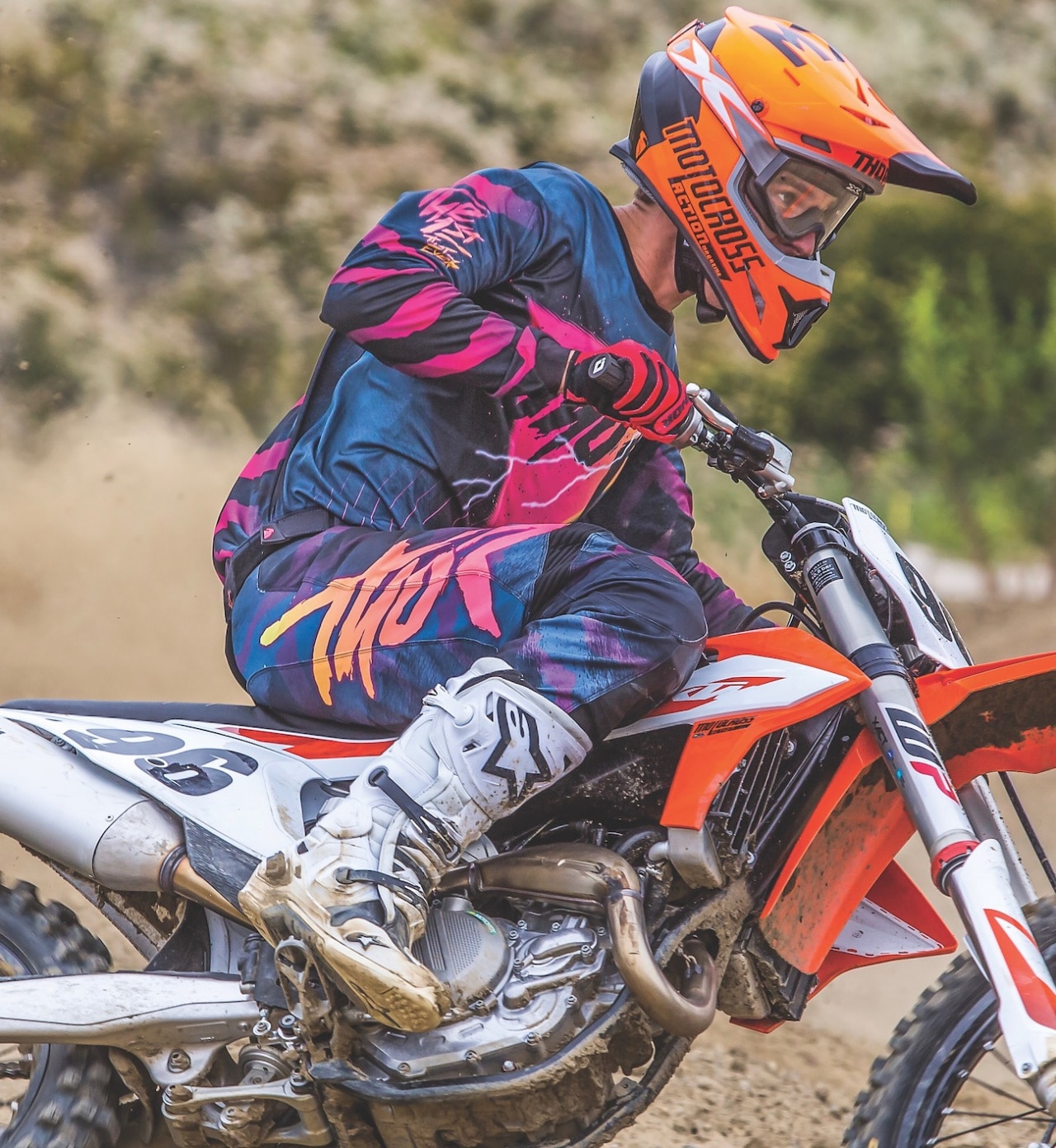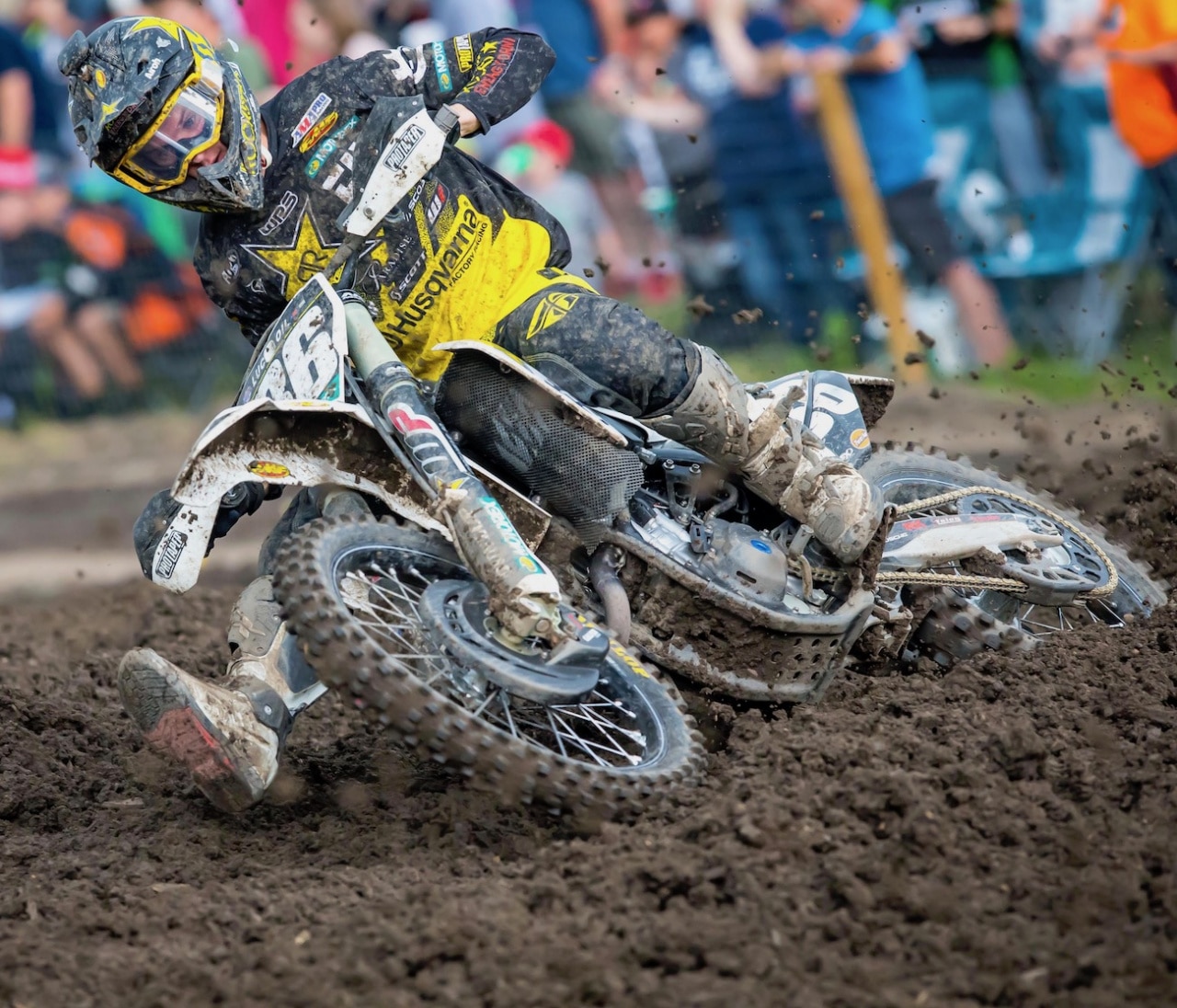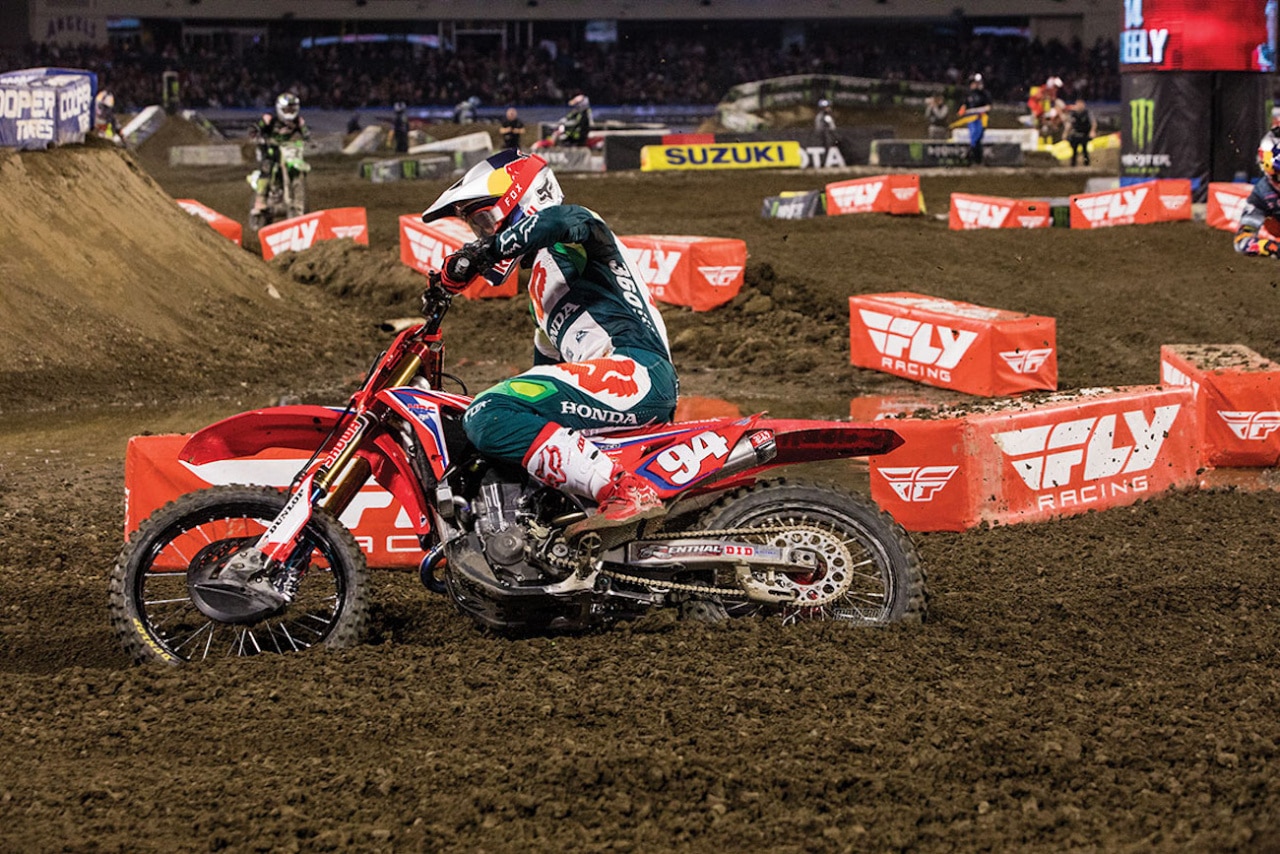TEN THINGS ABOUT WEIGHTING YOUR OUTSIDE FOOTPEG
 Josh Mosiman braces his knee against the tank to help leverage pressure onto the outside peg.
Josh Mosiman braces his knee against the tank to help leverage pressure onto the outside peg.
(1) Understanding. For most of us, the last thing we want to think about while riding our dirt bikes is weighting the outside footpeg. We would rather focus on the fun parts of riding dirt bikes, such as going fast, jumping and railing corners. Weighting the outside peg takes some effort to learn, but those who figure it out will benefit greatly.
(2) Importance. Weighting the outside footpeg helps you go through corners faster and more efficiently. It connects you and the bike to create a smoother flow through the corner. Without applying footpeg pressure, your shoulders lean too far inside or outside, which causes you to lift off the throttle, slow down and/or make a mistake.
(3) How-to. Take a few laps and focus specifically on weighting your outside footpeg while going through each corner. It’s tricky to learn, as our minds are already trying to do too many things at once. Make sure that you’re riding a track that is comfortable for you, and allow yourself some time to learn. Once you enter the corner, let off the rear brake and apply as much pressure as you can through your leg‚ down to your boot and into your outside footpeg. Then continue to apply the pressure as you exit the corner. To get a feel for it, ride laps with both feet on the footpegs all the way around the corners.
 Michael Mosiman presses down on the outside peg using the ball of his foot.
Michael Mosiman presses down on the outside peg using the ball of his foot.
(4) Foot position. The position in which your foot sits on the peg plays a huge role in the amount of pressure that you’re able to push through it. Focus on putting the ball of your foot on the peg and pointing your toes inward towards the bike. This is hard to do, but it’s important because it allows the maximum pressure to be applied. When your toes are pointed in, your legs naturally squeeze the bike more, which works in conjunction with footpeg pressure.
(5) Efficiency. Weighting your outside footpeg through corners will drastically increase your efficiency and allow you to ride faster, smoother and for longer durations. The pressure going through your legs lessens the pressure on your arms, which helps prevent arm pump. The more pressure you’re able to put through your footpegs, the better. It’s the same concept as squeezing your bike while accelerating when standing up. If you don’t squeeze with your legs, you’ll either fly off the back or go really slow.
(6) Hardpack corners. It can be difficult to go fast through a flat turn that is hard packed with minimal traction, but the best hard-pack riders transfer weight to the outside peg so that more weight can be put into the rear wheel to help it gain traction. If you try to go around a corner with both feet off the pegs, your bike will be unsettled and unable to achieve maximum bite in the corner. Setting your feet on the pegs keeps your center of gravity in a stable position, allowing the bike to corner with less steering input. When you add pressure to the outside footpeg, your bike functions better.
(7) Rutted corners. Even experienced riders don’t understand the importance of weighting their outside footpegs in rutted corners. It works the same as on hardpack. The added weight puts pressure on the outer edge of the rear tire’s side knobs to add stability. It also helps the rider keep his inside foot from hitting the ground. Most riders would rather go around a rut than go through it, but when weighting the outside footpeg, you’ll find that you have more control and more confidence.
 Ken Roczen puts pressure on the outside peg to help plant his Honda in this Supercross rut.
Ken Roczen puts pressure on the outside peg to help plant his Honda in this Supercross rut.
(8) Acceleration bumps. Weighting your outside footpeg works especially well in corners with acceleration bumps on the good line. If you aren’t applying pressure through your outside footpeg, then your weight is going into your bike’s saddle, which allows the bumps to throw your body weight up and down. It’s not optimum to corner while your body is bouncing over every bump. The simple act of pressing down with your outside peg can brace your body to stay in one place while utilizing more of the tire’s natural adhesion. Outside footpeg pressure helps your rear tire stay on the ground, driving you forward instead of up and down.
(9) Weighting both pegs. The faster you get, the more you’ll understand the importance of footpeg pressure on both pegs. As the sport evolves, many top riders are keeping their feet on the pegs more often. Eli Tomac and Ken Roczen are two riders leading the charge in the “feet on the pegs” movement. In the past, it was rare to see riders who kept both feet on the pegs in a corner. The ones who do are using pressure and leverage on the bike instead of the tight-rope-walker’s extended leg method.
(10) Tools. Sharp footpegs and comfortable boots are two tools that will help you weight your outside footpeg. Boots that are broken in restrict your movement less, making it easier to position your foot correctly, while sharp pegs keep your boots locked in place.






Comments are closed.